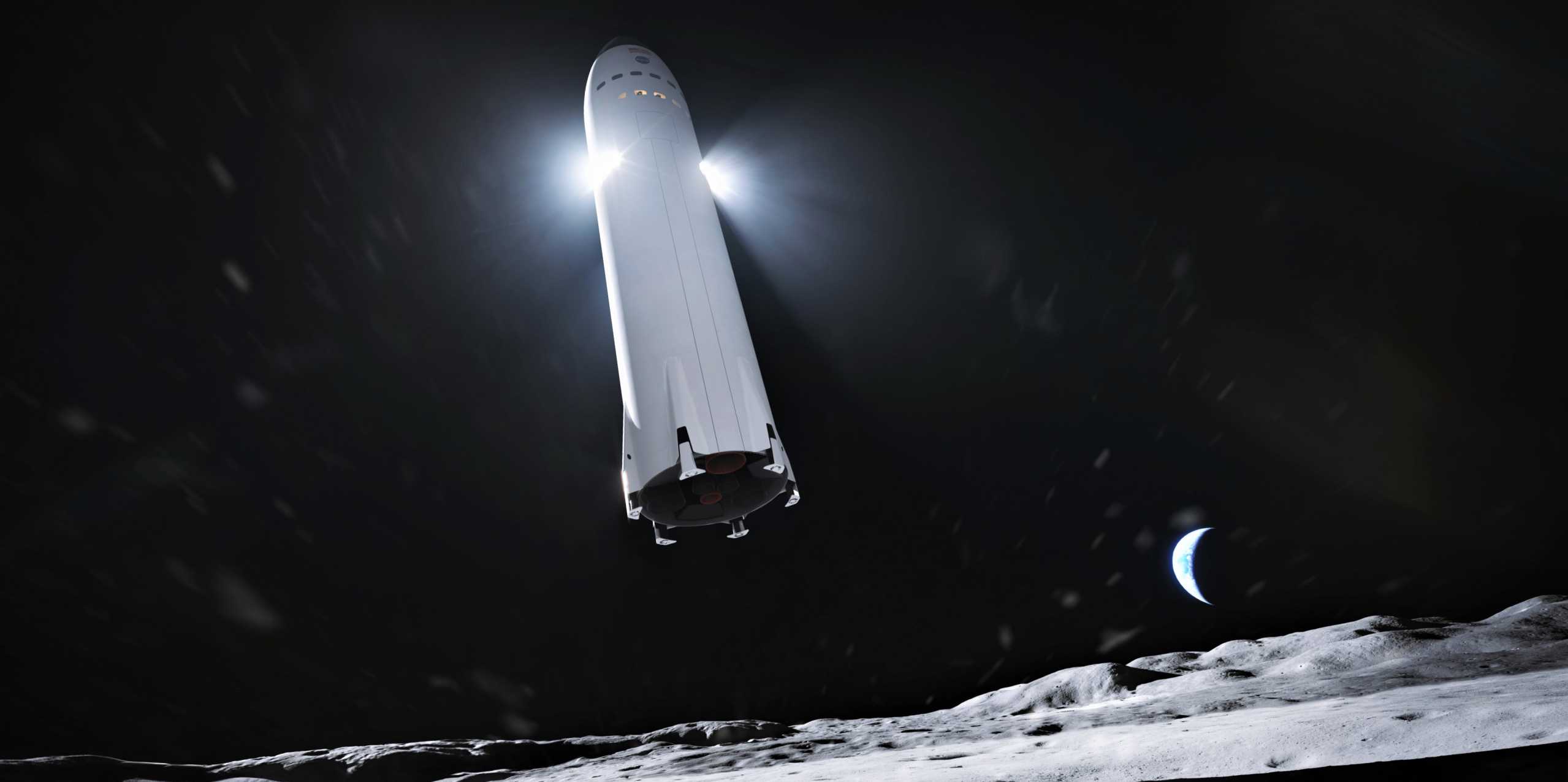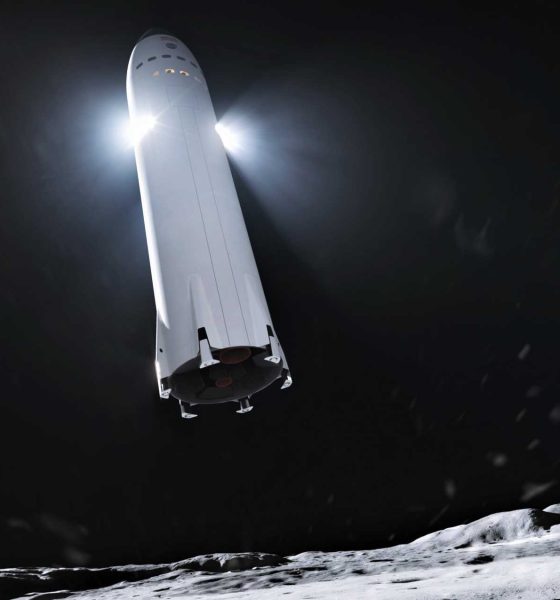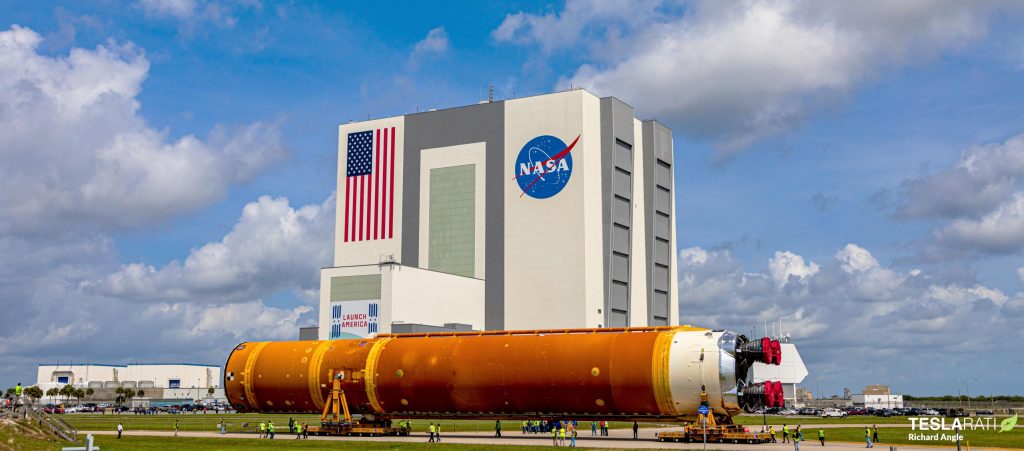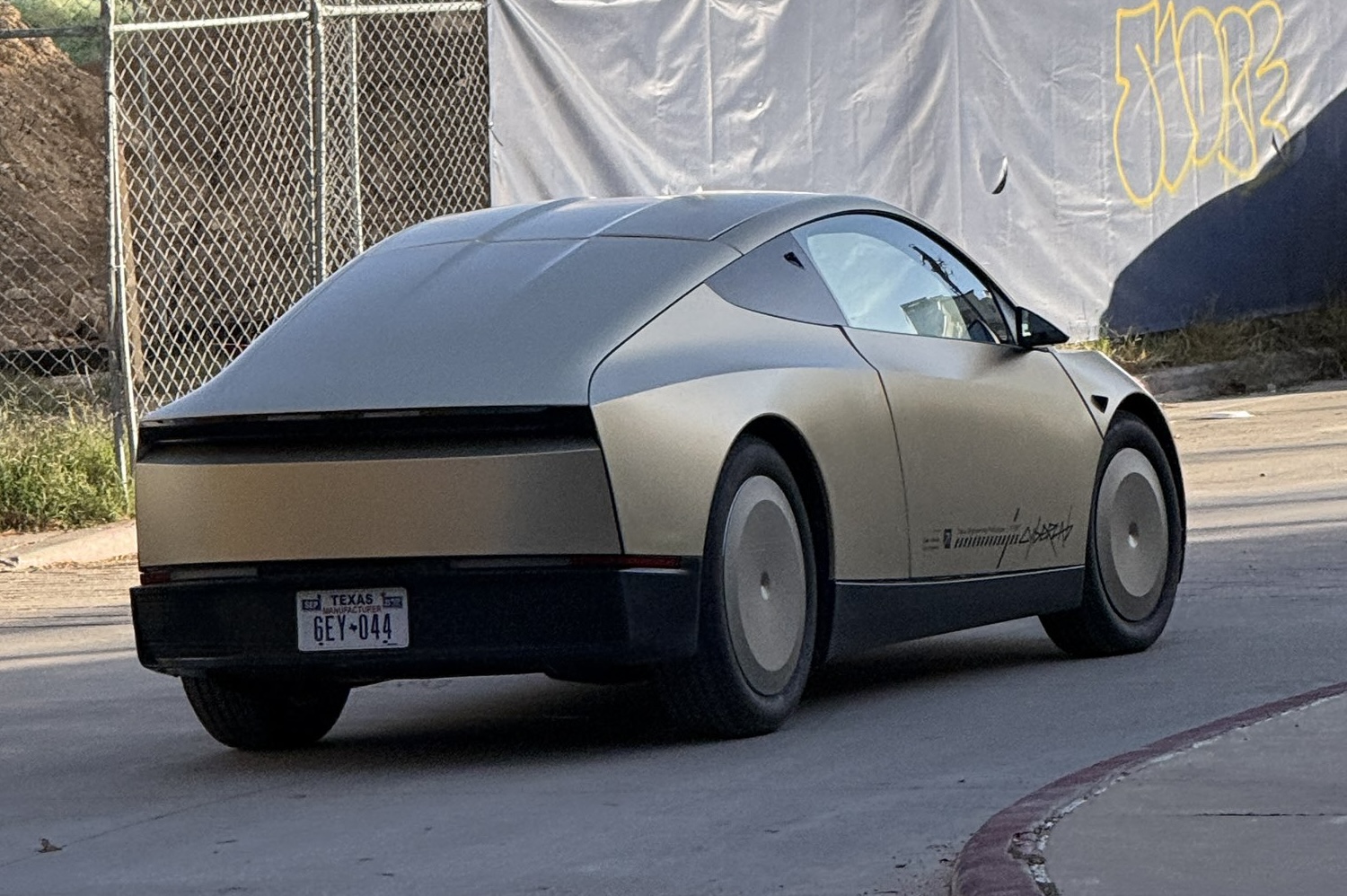

News
SpaceX, NASA celebrate Blue Origin’s lunar lander lawsuit loss and get back to work
In a November 9th press conference, NASA leaders have begun to publicly celebrate the end of seven months of Blue Origin litigation and disruption to its Human Landing System (HLS). A federal court’s dismissal of that lawsuit means that the space agency can finally get back to work with SpaceX on its Starship Moon lander.
Following the failure of that lawsuit, NASA administrator Bill Nelson says that it will take the space agency some time to fully determine what and how much damage Blue Origin has caused. In the briefing, Nelson and associate administrators Kathy Lueders and Jim Free confirmed that Dynetics’ protest and Blue Origin’s protest and lawsuit have delayed SpaceX’s first crewed Starship Moon landing to no earlier than (NET) 2025.
Painfully, though, the briefing primarily focused on NASA’s Space Launch System (SLS) rocket and Orion spacecraft and the latest news about the system and the space agency’s attitude towards it are not encouraging.
Namely, exemplifying just how broken and deceptive NASA’s cost “transparency” is when it comes to SLS and Orion, the space agency used the briefing to announce its first updated Orion cost projections in more than half a decade. All the way back in September 2015, NASA announced major Orion delays and revealed that it had already spent $4.7B on the spacecraft and was committing another $6.7B through its first crewed launch – then scheduled no earlier than 2023.
That’s likely where NASA is getting its magically diminished Orion cost estimate. In reality, including Bush-era Constellation Program development that began in 2006, Orion will have cost NASA and the US taxpayer almost $22 billion by the end of 2021 and before a single full-up launch. Effectively doing the bare minimum to acknowledge a sanitized version of reality, NASA now says that Orion will cost at least $9.3 billion to its first crewed launch, which has been delayed to NET May 2024. It’s entirely unclear how NASA is calculating that deflated figure but in the six years since the space agency’s 2015 announcement that it would spend another $6.7B before Orion’s first crewed launch, it’s actually spent at least $8.4B and will have blown past the latest $9.3B target by mid-2022. Barring drastic funding cuts, Orion development will actually cost the US about $12.6B from 2016 to Artemis II and ~$25.8B since 2006 (not including inflation).
In an even starker demonstration of cognitive dissonance, when a New York Times reporter asked a hard question about the possibility of sidestepping Orion and SLS to get astronauts onto SpaceX’s Starship lunar lander, Administrator Nelson – having just repeatedly discussed Starship – fell back on an old boilerplate statement that “there’s only one rocket capable of doing this” – “this” being launching humans to the Moon and returning them to Earth and that “one rocket” being SLS. Association admin Jim Free also exhibited similar confusion, stating that “the architecture…just wouldn’t work.”
In reality, as currently contracted with NASA, SpaceX’s Starship Moon lander is a highly capable crewed spacecraft that will be refueled in Earth orbit before propelling itself to lunar orbit, where an SLS-launched Orion spacecraft would join it and transfer over three astronauts. Starship would then use its own propulsion to change orbits, land on the Moon, and eventually boost back into lunar orbit to transfer that crew back to Orion for the return to Earth. Nothing short of sheer ignorance – willful or not – could prevent competent spaceflight engineers or managers from understanding the possibilities such an architecture raises.
If NASA is already committed to human-rating Starship’s propulsion systems, which it is, it doesn’t take a grand leap of imagination to consider the possibility of adding a few more burns to Starship’s extremely complex concept of operations. If, for example, Starship has enough performance to return to Earth orbit from the lunar surface, it’s not hard to imagine NASA’s Artemis astronauts boarding Starship in Earth orbit after a far cheaper commercial launch and then returning to Earth orbit to debark Starship and return to that crew-rated reentry vehicle. As it turns out, NASA already has a highly successful crew-rated commercial rocket and spacecraft that’s already operational and likely more than 10 times cheaper than SLS/Orion.

While there are obvious challenges and uncertainties with such an option, the point is more that failing to even acknowledge the possibility of alternatives is a brutal appraisal of several of NASA’s most senior leaders and confirms that the politics of a jobs program like SLS/Orion is actively disrupting their ability to engage with reality and properly manage complex, risky programs.
Ultimately, it’s great news that SpaceX and NASA can finally get back to work on their Starship Moon lander plans. However, it’s also clearer than ever that SLS and Orion will remain a noose precariously balanced around the agency’s neck, forever threatening the Artemis Program and stifling NASA’s ability to seriously plan for – let alone publicly entertain or even acknowledge – contingencies or fresh ideas.

Elon Musk
Delaware Supreme Court reinstates Elon Musk’s 2018 Tesla CEO pay package
The unanimous decision criticized the prior total rescission as “improper and inequitable,” arguing that it left Musk uncompensated for six years of transformative leadership at Tesla.

The Delaware Supreme Court has overturned a lower court ruling, reinstating Elon Musk’s 2018 compensation package originally valued at $56 billion but now worth approximately $139 billion due to Tesla’s soaring stock price.
The unanimous decision criticized the prior total rescission as “improper and inequitable,” arguing that it left Musk uncompensated for six years of transformative leadership at Tesla. Musk quickly celebrated the outcome on X, stating that he felt “vindicated.” He also shared his gratitude to TSLA shareholders.
Delaware Supreme Court makes a decision
In a 49-page ruling Friday, the Delaware Supreme Court reversed Chancellor Kathaleen McCormick’s 2024 decision that voided the 2018 package over alleged board conflicts and inadequate shareholder disclosures. The high court acknowledged varying views on liability but agreed rescission was excessive, stating it “leaves Musk uncompensated for his time and efforts over a period of six years.”
The 2018 plan granted Musk options on about 304 million shares upon hitting aggressive milestones, all of which were achieved ahead of time. Shareholders overwhelmingly approved it initially in 2018 and ratified it once again in 2024 after the Delaware lower court struck it down. The case against Musk’s 2018 pay package was filed by plaintiff Richard Tornetta, who held just nine shares when the compensation plan was approved.
A hard-fought victory
As noted in a Reuters report, Tesla’s win avoids a potential $26 billion earnings hit from replacing the award at current prices. Tesla, now Texas-incorporated, had hedged with interim plans, including a November 2025 shareholder-approved package potentially worth $878 billion tied to Robotaxi and Optimus goals and other extremely aggressive operational milestones.
The saga surrounding Elon Musk’s 2018 pay package ultimately damaged Delaware’s corporate appeal, prompting a number of high-profile firms, such as Dropbox, Roblox, Trade Desk, and Coinbase, to follow Tesla’s exodus out of the state. What added more fuel to the issue was the fact that Tornetta’s legal team, following the lower court’s 2024 decision, demanded a fee request of more than $5.1 billion worth of TSLA stock, which was equal to an hourly rate of over $200,000.
Delaware Supreme Court Elon Musk 2018 Pay Package by Simon Alvarez
News
Tesla Cybercab tests are going on overdrive with production-ready units
Tesla is ramping its real-world tests of the Cybercab, with multiple sightings of the vehicle being reported across social media this week.

Tesla is ramping its real-world tests of the Cybercab, with multiple sightings of the autonomous two-seater being reported across social media this week. Based on videos of the vehicle that have been shared online, it appears that Cybercab tests are underway across multiple states.
Recent Cybercab sightings
Reports of Cybercab tests have ramped this week, with a vehicle that looked like a production-ready prototype being spotted at Apple’s Visitor Center in California. The vehicle in this sighting was interesting as it was equipped with a steering wheel. The vehicle also featured some changes to the design of its brake lights.
The Cybercab was also filmed testing at the Fremont factory’s test track, which also seemed to involve a vehicle that looked production-ready. This also seemed to be the case for a Cybercab that was spotted in Austin, Texas, which happened to be undergoing real-world tests. Overall, these sightings suggest that Cybercab testing is fully underway, and the vehicle is really moving towards production.
Production design all but finalized?
Recently, a near-production-ready Cybercab was showcased at Tesla’s Santana Row showroom in San Jose. The vehicle was equipped with frameless windows, dual windshield wipers, powered butterfly door struts, an extended front splitter, an updated lightbar, new wheel covers, and a license plate bracket. Interior updates include redesigned dash/door panels, refined seats with center cupholders, updated carpet, and what appeared to be improved legroom.
There seems to be a pretty good chance that the Cybercab’s design has been all but finalized, at least considering Elon Musk’s comments at the 2025 Annual Shareholder Meeting. During the event, Musk confirmed that the vehicle will enter production around April 2026, and its production targets will be quite ambitious.
News
Tesla gets a win in Sweden as union withdraws potentially “illegal” blockade
As per recent reports, the Vision union’s planned anti-Tesla action might have been illegal.

Swedish union Vision has withdrawn its sympathy blockade against Tesla’s planned service center and showroom in Kalmar. As per recent reports, the Vision union’s planned anti-Tesla action might have been illegal.
Vision’s decision to pull the blockade
Vision announced the blockade in early December, stating that it was targeting the administrative handling of Tesla’s facility permits in Kalmar municipality. The sympathy measure was expected to start Monday, but was formally withdrawn via documents sent to the Mediation Institute and Kalmar Municipality last week.
As noted in a Daggers Arbete report, plans for the strike were ultimately pulled after employer group SKR highlighted potential illegality under the Public Employment Act. Vision stressed its continued backing for the Swedish labor model, though Deputy negotiation manager Oskar Pettersson explained that the Vision union and IF Metall made the decision to cancel the planned strike together.
“We will not continue to challenge the regulations,” Petterson said. “The objection was of a technical nature. We made the assessment together with IF Metall that we were not in a position to challenge the legal assessment of whether we could take this particular action against Tesla. Therefore, we chose to revoke the notice itself.”
The SKR’s warning
Petterson also stated that SKR’s technical objection to the Vision union’s planned anti-Tesla strike framed the protest as an unauthorized act. “It was a legal assessment of the situation. Both for us and for IF Metall, it is important to be clear that we stand for the Swedish model. But we should not continue to challenge the regulations and risk getting judgments that lead nowhere in the application of the regulations,” he said.
Vision ultimately canceled its planned blockade against Tesla on December 9. With Vision’s withdrawal, few obstacles remain for Tesla’s long-planned Kalmar site. A foreign electrical firm completed work this fall, and Tesla’s Careers page currently lists a full-time service manager position based there, signaling an imminent opening.








